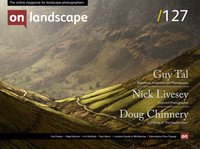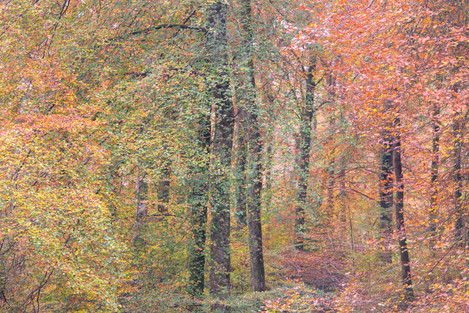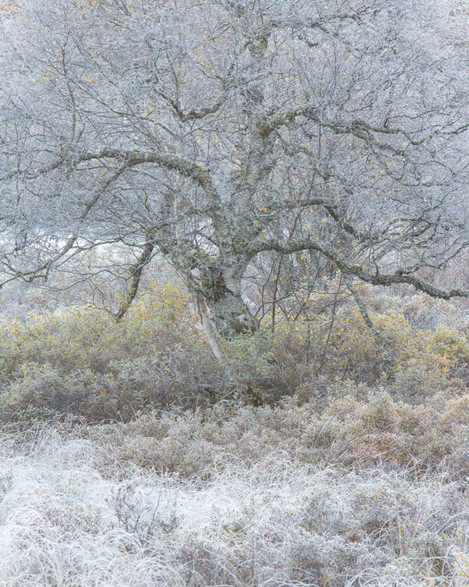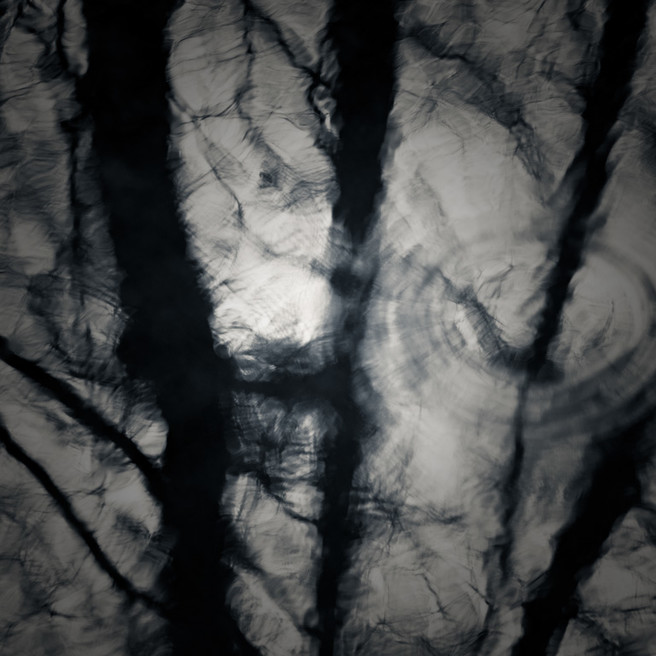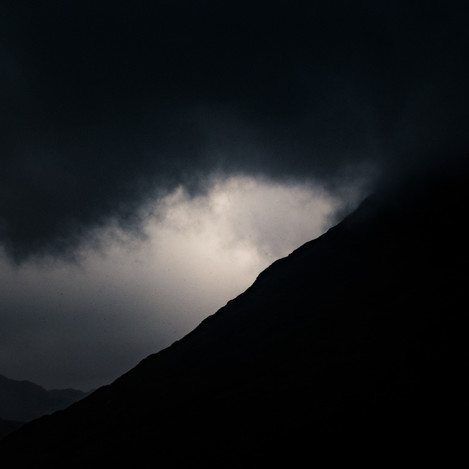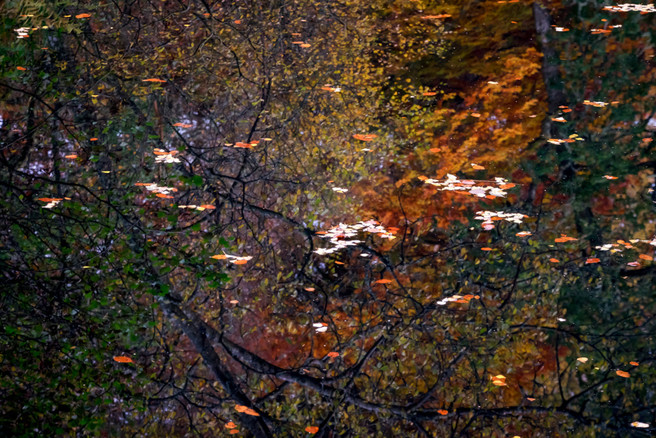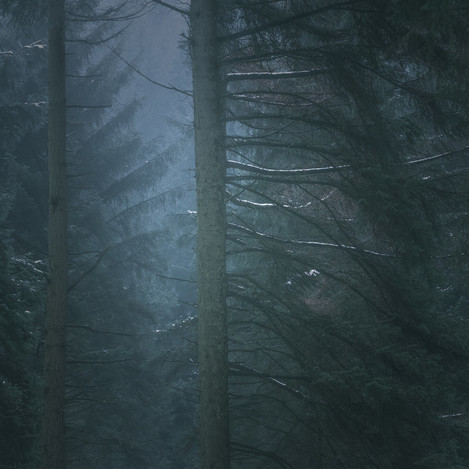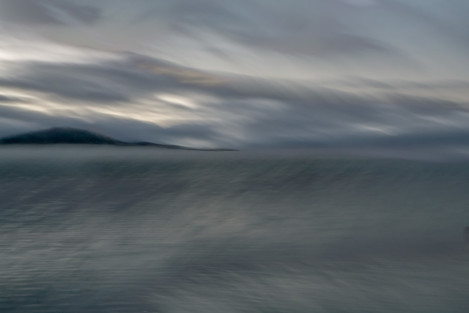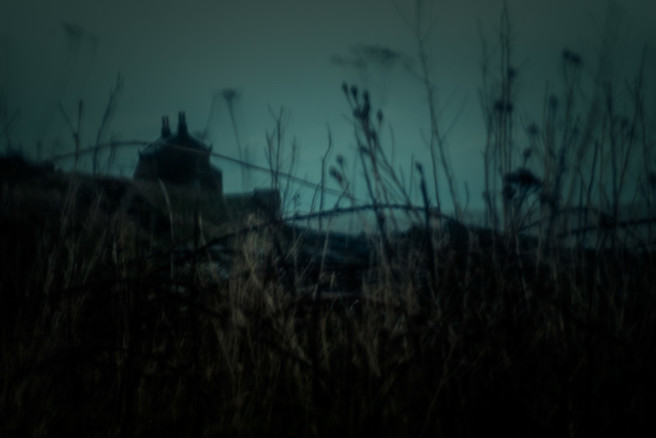... and the Merits of an Open Mind

Doug Chinnery
I am an artist working with images full of colour and movement in an attempt to express what I see around me. Inspired by artists, in particular the impressionists and abstract impressionists as well as Chris Friel and Valda Bailey, I work in abstraction trying to capture mood and emotion. I live in obscurity with my wife, Beth, and my buddy, Eddie.
Have you felt it? That feeling of being of being in the right place… at the wrong time? Arriving for a much anticipated session making images at long dreamed of location only to realise that the elements have conspired against you (again) and the hoped for conditions are not to be?
Of course you have, we all have.
Whom shall we blame? The weather gods? Cruel beings who toy with us, sometimes tantalising us with photographic wonder, more often than not turning off the lights on their way out. We could blame other photographers, the likes of Joe Cornish, Mark Littlejohn and Guy Tal who so obviously have their own weather systems which follow them around, over which they seemingly have total control and can produce mist, golden light or whatever conditions they require at will to produce an endless stream of glorious images - there can be no other explanation for their wonderful output, right?
Or, perhaps, we could vent our venom on the curse of ‘pre-visualisation’. Those days spent at our day job, when we should have been doing something productive (from the point of view of our boss) but in reality we were dreaming of being out with the camera, picturing the location, the magnificent light, the mirror reflections in the water, the compositions we would make, the wind in our face, the awards we would win - all now not to be.
Then there is the guy (and I’m not being sexist here because, even though I am not a betting man, I would put good money on it being a man) who one day, somewhere, back in the mists of photographic time decided for us that the only light in which beauty could be captured in an image was during two or three hours of ‘golden’ light a day, and if that golden light should fail to materialise then all that remained for the photographer was to let shoulders slump, heart sink and to turn their backs on the landscape and trudge home in defeat.
Or, maybe, just maybe the fault lies with us? In reality, can’t arresting images be made in nearly all conditions? Let us discount gale force winds so strong we can barely stand, rain so heavy our gear is in danger of failure, dangerous blizzards and so on. Apart from these extremes, how can we see beyond the halcyon view held out to us by so many that dictate we need mirror calm lakes, explosions of colour in the sky, surfaces bathed in glorious gold, wraith like mist and crepuscular rays scoping across the hillsides? How can we interpret the landscape in different conditions, in different ways so that we make satisfying work more often? How can we stop our minds thinking negatively about the conditions? How can we begin to realise there are many ways of interpreting the landscape?
‘Pre-visualisation’ can be our enemy. (I prefer to think of it as simply ‘visualisation’, but that is just the pedant in me seeing the prefix as redundant). It is so easy to pre-load our minds with a set of ideal conditions which raise expectations. When the conditions don’t materialise it is difficult to raise enthusiasm for anything less. Personally, I much prefer to approach a location as a blank canvas. To have nothing in mind as to what I want, rather to see and react to what I am presented with. The conditions, coupled with how I am feeling on the day will drive how I make my images. It will affect which camera and lens I choose to use - whether film or digital, pinhole or Polaroid. It will guide me as to whether I will work in a more conventional way or if I will use alternative techniques like ICM (Intentional Camera Movement) or ME (Multiple Exposures). Should I extend my exposures with extreme neutral density filters? It will also dictate whether I begin ‘seeing’ in monochrome or colour. All these decisions I leave until I arrive on the day and take in the scene and conditions. In this way, I find I am rarely disappointed and find I maintain a more positive approach to the place. Its not foolproof, but it certainly helps me.
Certainly, visualisation is a useful tool, especially in terms of composition. Prior visits may have planted the seeds of an image in our mind. Scouting a location, often in varying conditions builds a healthy familiarity with place. We begin to feel comfortable and in harmony with a particular location. Images start to form in our mind. The best time of year, the best time of day and the ideal weather too.
Perhaps the worst example of when pre-visualisation is unhelpful is when it is done for us. When others have been to the place before and made images we have seen. Those blingy images on social media and in magazines. It can be so easy to allow these pictures to seduce us, to allow them to seep into our soul and convince us this is THE image we need. The only image that will do when we visit. We put on creative blinkers, shutting out all other possibilities and just have to have THAT image in our collection. If the light doesn’t play ball, if the tide isn’t right, if the mist doesn’t rise we go home dejected and defeated.
Indeed, anything that closes our mind to creative possibilities is our enemy. The more caveats we put on what is essential for, to our minds, a compelling image, then then the fewer joyful times we will have in the field and the more creative opportunities we will miss. Creativity requires an open mind. A willingness to explore, to experiment, to test, to fail, to fall and get back up, a willingness to adapt to the conditions, a willingness to open our eyes and see the world as we see it, not as others have told us it should look, a willingness to stand out as different.
So, while I earnestly urge everyone to look at as much quality photography and art as possible (in all genres), to read poetry and other creative writing, listen to music - indeed to experience as much as possible which will stimulate us creatively, it is still essential that we then use this as a source of inspiration, not as something to slavishly copy. Let us take all that inspiration in which we have immersed ourselves with us into the landscape, then open our eyes and really look at what is around us. This takes time and patience. It takes a willingness to make less images. Take time to explore a location examining all the possibilities. More often than not the most compelling images don’t leap out at us, they need to be searched for. Alarming those this may be for some, this may involve walking some distance from the car park. It can often be that such images are not of the wider landscape, but are of more intimate scenes or detail images and these can take some searching out. Using a small compact camera as a digital ‘notebook’ to experiment with compositions is such a useful tool in this. It saves getting the ‘big’ camera out and allows us to wander unhindered and play. To play with angles and compositions, to think about light and exposure, about mood and effect, about lens choice and all the rest. Then, once settled we can begin to craft our image.
The holy grail for most of us is communicating emotion and feelings in an image. It is no easy thing to achieve. It is so easy to get wrapped up in the gear, in apertures and ISO’s, in barrel distortion and micro-contrast in the shadows, to be so engrossed in technical perfection we fail to communicate any emotion at all in our photograph.
I would argue, that far more important than any technical perfection is the need to make images that get your audience to feel something. To do this we need to think about how the sensation of being in the landscape is making us feel but we are so often wrapped up in operating the camera we don’t stop to think about how we are feeling or what the landscape means to us. If we fail to think about how we feel, how can we hope to inject feeling and emotion into our photographs? If we can, amidst the rush to get the technical stuff right think, too, about whats going on inside us then we are taking the first step to creating images that are a reflection of who we are, not who others are. We are all different and if we allow our individuality to come through in our images they will project this to our audience. Our images will feel different to those of others. Perhaps not radically, after all it is almost impossible to be truly unique, but our work will be far removed from the ‘photo-copied’ images we are deluged with in this socially media driven world. If we are prepared to, in some way, express the feeling of the wind in our face, the fear inspiring nature of a storm in the mountains, the melancholy of a twisted Rowan on a bleak hillside, the hope from a glimpse of light between the clouds - if we can help our audience feel something of what we felt as we stood there, then they will begin to connect with us and with the landscape we are revealing to them.
I have to say here that there is absolutely nothing wrong with the pretty landscape. I will leap on it as hungrily as the next photographer. I glory in beauty. When the mist rises and golden light bathes a scene I will eagerly make the most of the opportunities presented, of course. I am not a photographer who feels that simply making beautiful images of beautiful places is somehow less worthy. Quite the opposite. But I do believe with a passion that there is so much more out there and that there are so many more ways of showing the world to people who don’t look at the world as we do.
Now, it is all very well waxing lyrical about producing creative images full of emotion and a sense of place, but it is quite another to know how to use the camera to do it. How do we go about it, in practical ways?
As always with photography the task can seem daunting. However, in reality, we still have a basic set of tools at our disposal and it is best to keep things simple, especially to begin with. It is easy to let the complexity of modern cameras get in the way of making images, but it still all boils down to mastering exposure. Having a real understanding and perhaps more importantly, a feel for how aperture, exposure length and ISO combine to affect how our image looks. By juggling these three factors we can manipulate the image to our advantage. Add to this a willingness to be more experimental with the point of focus and depth of field (which includes aperture choice in large part) and we can begin to craft compelling images.
Lens choice is so important. We may have lenses we feel we ought to be using in the landscape, or using in certain ways, because this is what we have read or been taught. A willingness to experiment with less conventional lens choices or perhaps using them in more radical ways can help us in our quest. As examples, if our lens of choice in the landscape is a super-wide zoom try using a longer lens, or maybe try the discipline imposed by a prime. Dare I suggest putting a Lensbaby on or trying some old legacy lenses with adaptors on your super-modern camera body. If you usually work at narrower apertures, try the experience of capturing the landscape wide open or at mid-range apertures. Doing things differently will alter the results you get and may be surprisingly pleasing.
By being prepared to break the ‘rules’ enforced on us by those who try to set themselves up as the ‘Photography Police’ we can use exposure, lens choice and composition to express our view of the world. So often we are lectured that highlights should not be blown and, yes, if detail can be held in the highlights all well and good - but no one ever hung a histogram on a gallery wall. Will the world come to an end if we allow pure white to exist in our picture? Why do we HAVE to hold detail in all of our shadows? Why can we not plunge some areas into darkness if this creates a certain low key mood? Saturate. Desaturate. Place key objects in the centre of the frame. Centralise horizons. Blur. Freeze. Shallow depth of field. Front to back sharpness. Nothing should be off limits. No one should tell us what our images should look like. We should feel completely free to portray the landscape in whatever way we see it.
As photographers we all place restrictions on ourselves. We all have boundaries. The things we find acceptable, the lines we won’t cross. For some, there must always be something in the frame which is sharp. For others sharpness can be irrelevant. For yet others nothing less than ‘front to back’ sharpness will do. Some will clone out irritating objects while others refuse to remove a thing from the frame save dust spots on the sensor and so on. What I would caution against is becoming so bound by personal restrictions, perhaps based on what we feel is seen as correct by those we follow and admire, that our creativity is stifled. From an inability to accept any other approach but one that can result in an endless reel of identikit images that can sometimes (not always, but sometimes) lack real soul. By binding ourselves with a long list of technical requirements and self imposed rules on what makes an acceptable image, be it in location type, conditions or style, we lack the fluidity and adaptability of the artist.
Most artists love happy accidents, a run of paint, an errant brush stroke, ill disciplined pencil marks. It is these very things which bring the life and spontaneity into their work, that make the pictures sparkle and intrigue, that lift them from being mere technical drawings created in AutoCad into art that has flowed from a human soul. Art that moves and inspires.
Should our photographs not have something more of that in them?
[/s2If]

